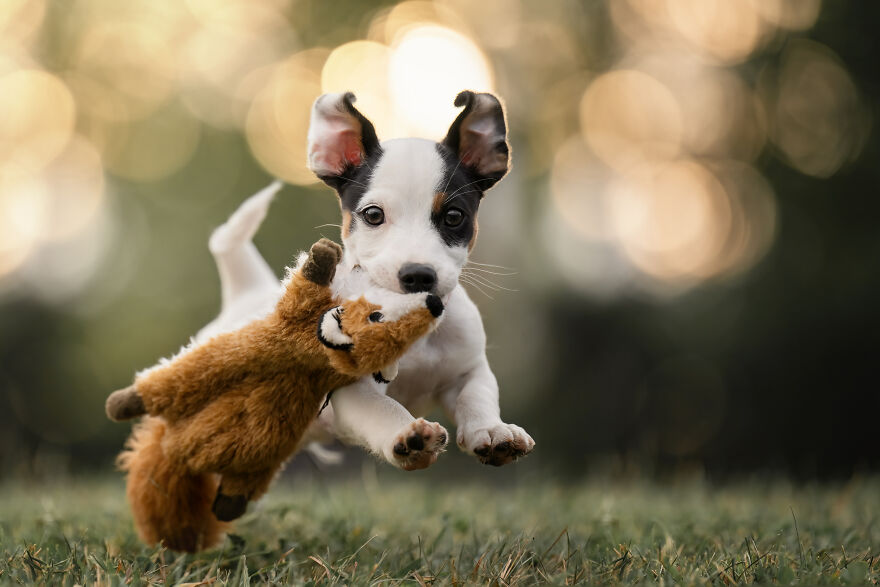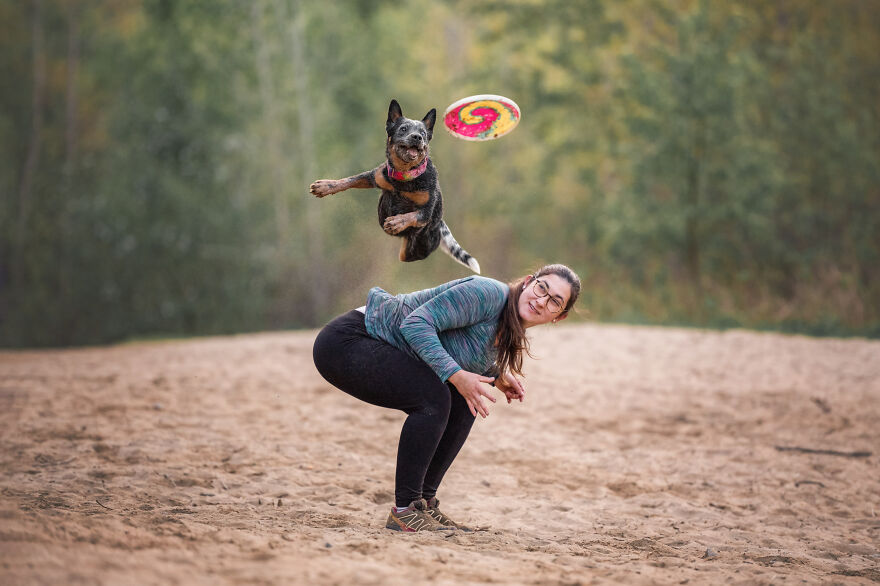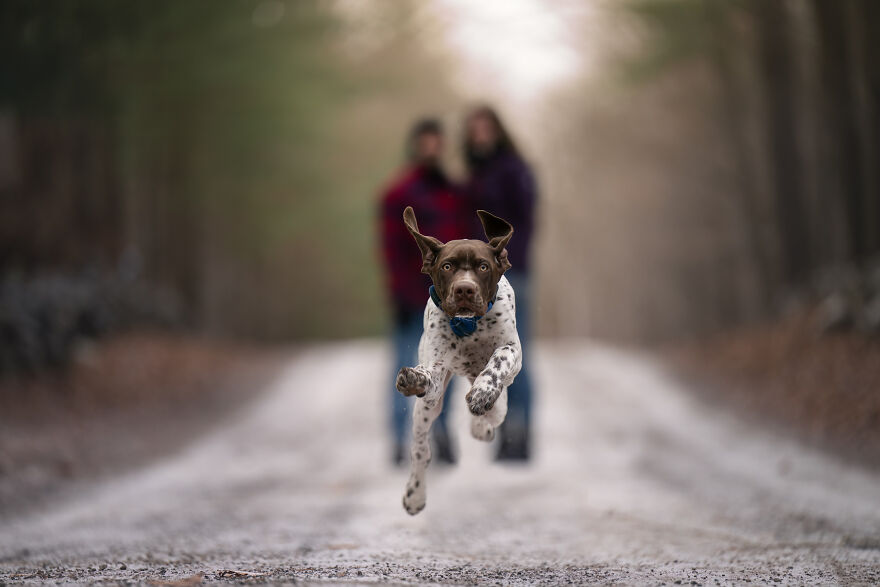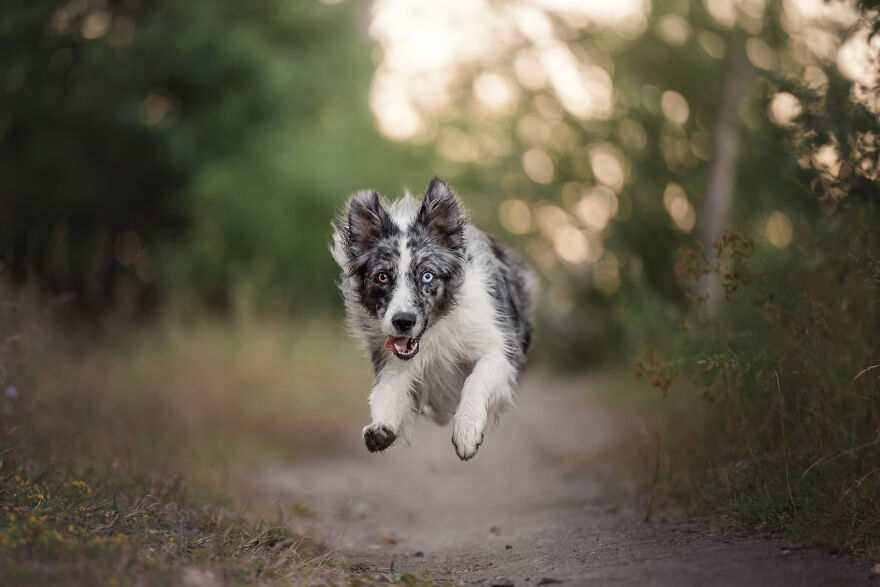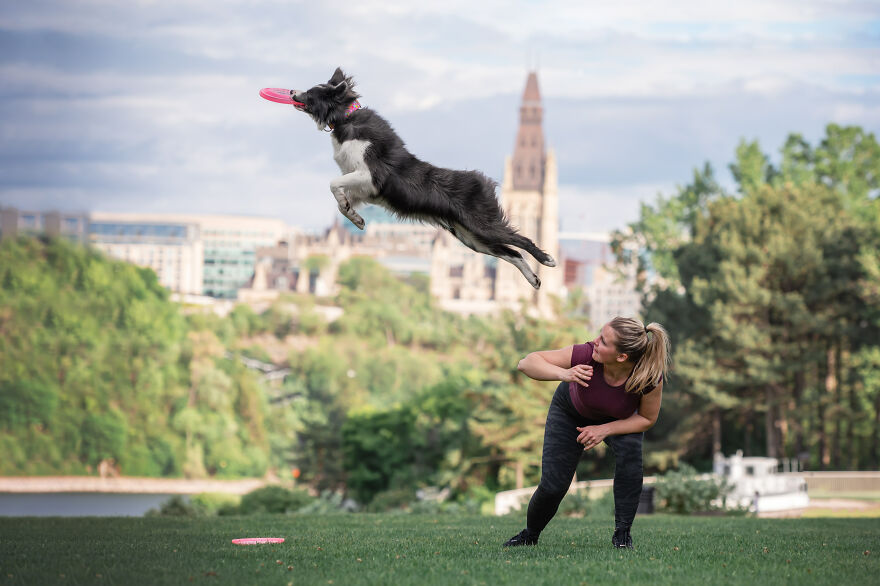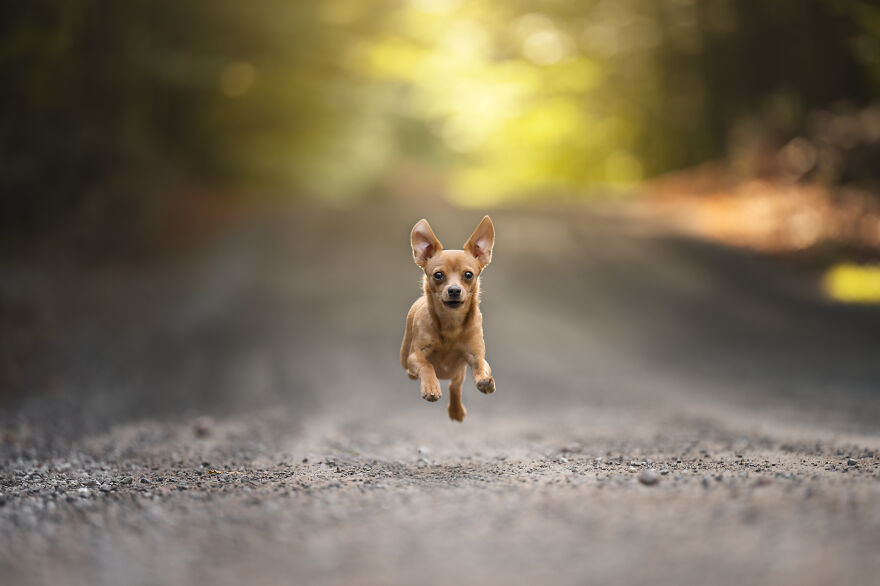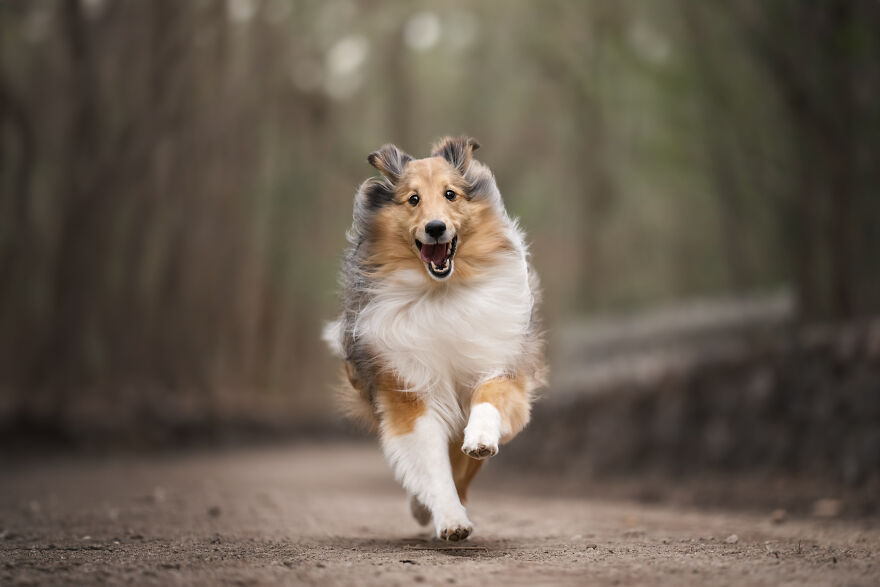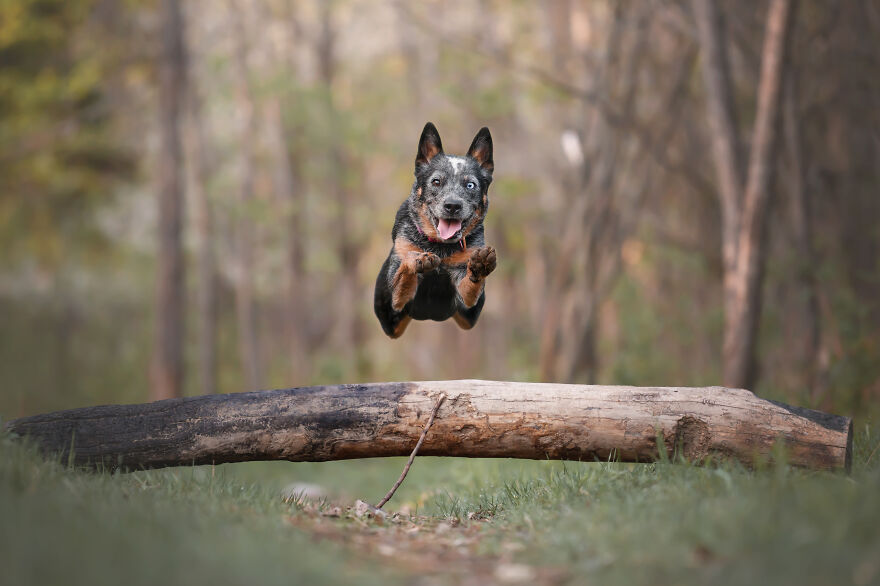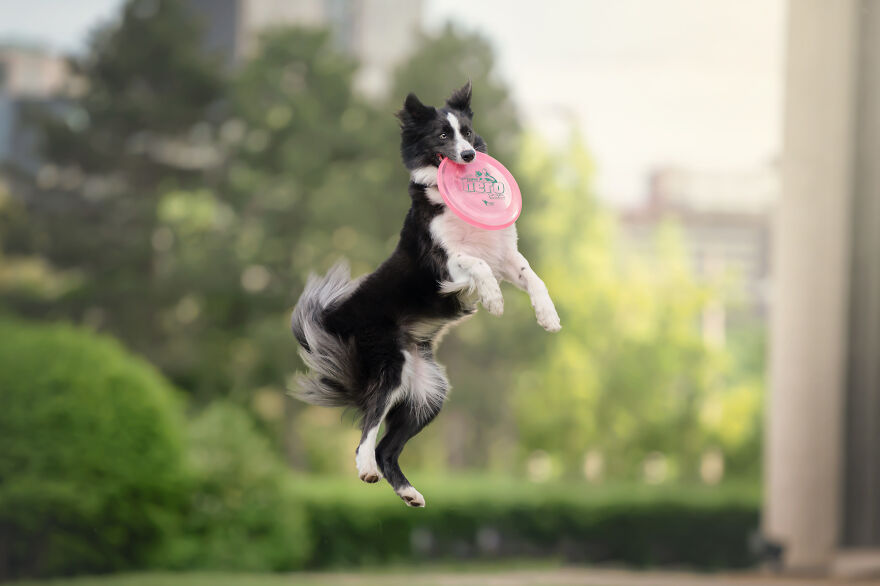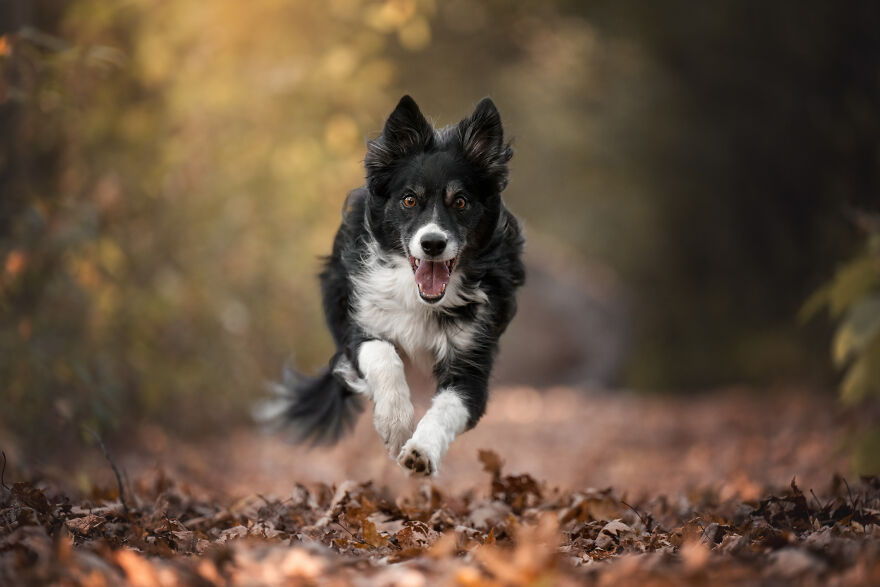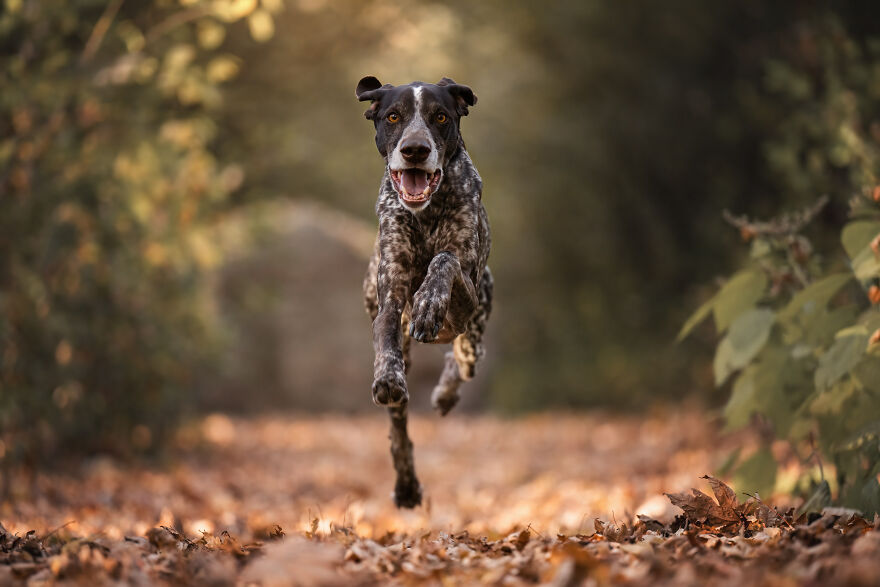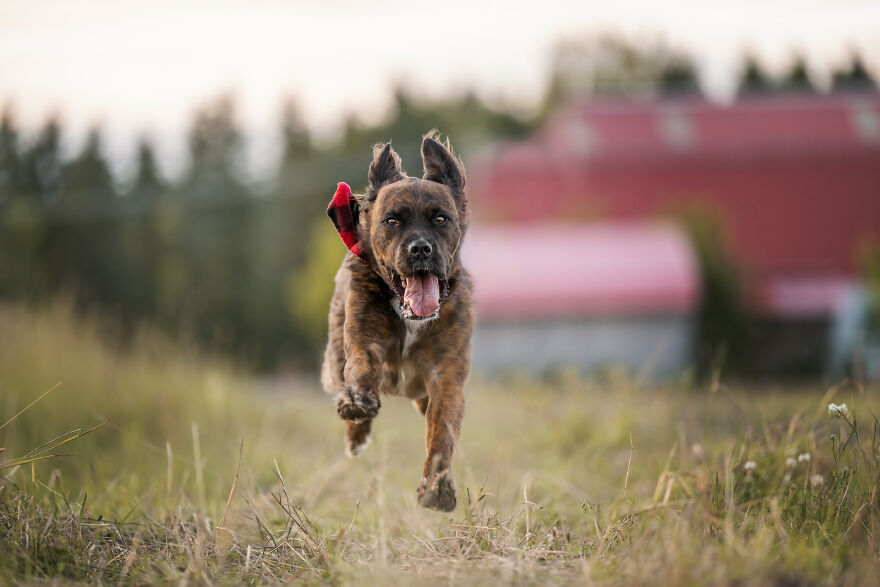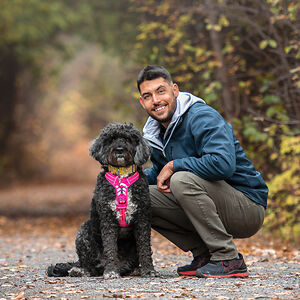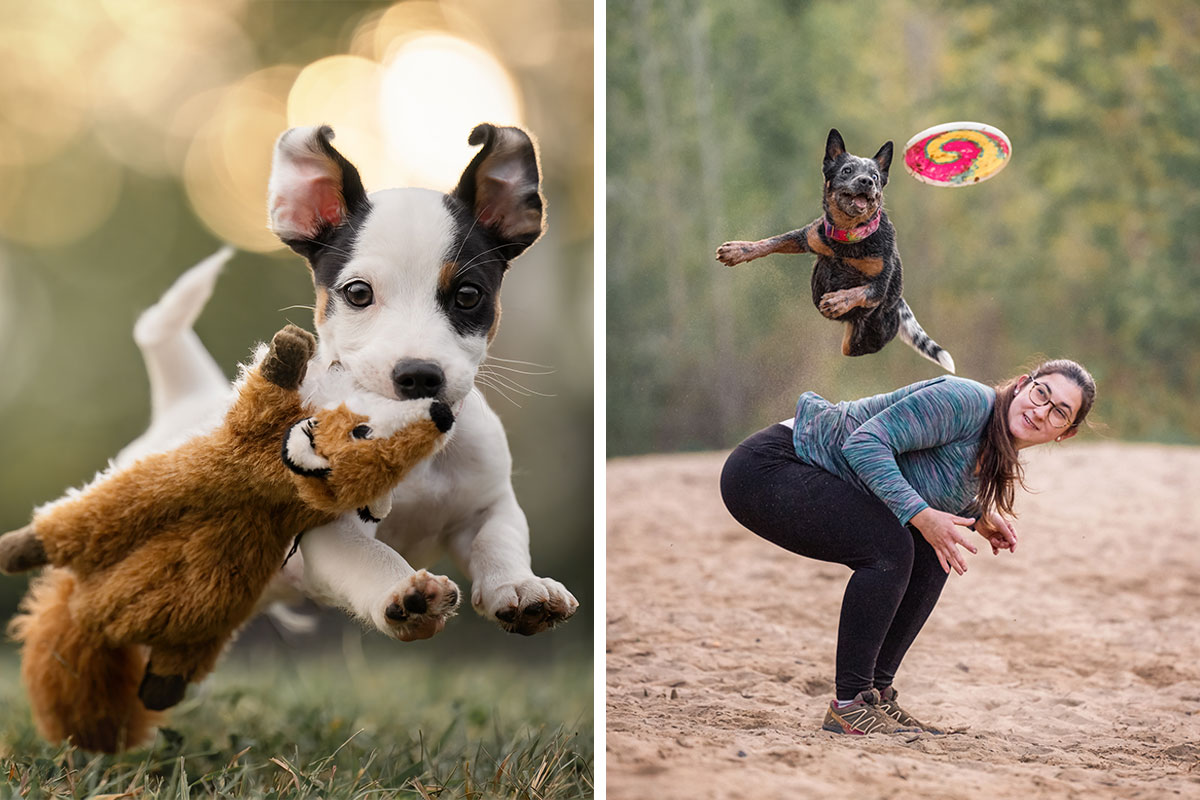
6Kviews
I Captured Dogs On The Run, And The Results Are The Most Adorable Faces Of Joy (12 Pics)
For over 8 years, I've been immersed in the world of pet photography, capturing the sheer joy and boundless energy of our furry friends. It all began with a deep love for animals and a Nikon D7200 in hand, leading me on a journey to freeze moments of canine magic.
There's something truly magical about witnessing dogs in motion, their graceful movements capturing the essence of pure happiness. Here are a few things I want to share about photographing dogs in flight.
More info: Instagram | bio.site | Facebook
This post may include affiliate links.
Dogs in motion require meticulous adjustment of camera settings. Commence with a shutter speed of 1/1000 as a baseline, though adjustments upwards (to 1/1250 or beyond) may be necessary depending on the dog's velocity. Activate continuous focus mode to ensure the camera maintains sharp focus as the dog advances towards you. Avoid relying on the 'spray & pray' approach, instead adopt a strategic approach by initiating shots when the dog reaches an optimal distance, all while ensuring consistent focus on the subject.
Rainbow 2
When capturing dogs in action, selecting the appropriate equipment is crucial to maximize your chances of success. This entails understanding the key features to prioritize in both camera and lens selection. For the camera, prioritize models with a high FPS capability (at least 5 fps), dependable autofocus, and continuous focus mode. Utilizing a fast lens with a maximum aperture of 2.8, which also offers rapid focusing, facilitates capturing those perfect airborne dog shots. While I typically favor zoom lenses for dogs approaching the camera due to their focal length versatility, prime lenses (fixed focal length) like the 200mm F/2 can also yield exceptional results. Currently, my preferred setup consists of a Nikon Z9 paired with a 70-200mm f/2.8 lens, although most intermediate to advanced cameras are capable of achieving similar outcomes. Even with my initial camera, a Nikon D7200, I managed to capture dogs in motion, albeit with added difficulty.
Matcha
She's so pretty and her eyes are elegant! The name 'Matcha' means rubbed tea in Japanese.
Lucky
A frequent challenge faced by photographers new to this style is capturing images where the eyes are not in focus. This issue can arise due to various factors, including insufficient shutter speed, improper focus point selection, the use of slower focusing lenses, instability during shooting, and more. Mastery in this type of photography requires dedicated practice. I honed my skills through a method I like to call the 'skill mastery cycle,' which involves consistent practice, thoughtful reflection on areas for improvement, and applying those insights during subsequent sessions.
Jerry
Ellie
One session that will always hold a special place in my heart is the day I met Echo, a playful pup with boundless energy and a heart full of love. As he bounded through the fields with his favorite toy in tow, I knew I had to capture the pure joy radiating from his every movement. And when I looked at the final image, frozen in mid-air, I couldn't help but smile at the magic we'd created together.
Rainbow
I think rainbow is my favorite! They're all darling but rainbow has a certain energy I just love♥️
Lilo
Mastering the art of freezing motion requires more than just technical know-how—it's about understanding the rhythm and energy of each individual dog. From setting the perfect shutter speed to maintaining focus, it's a delicate dance that I've honed through years of practice and perseverance.
So here's to the dogs who inspire us, challenge us, and fill our lives with endless love and laughter. Follow along on Instagram where I share tips and where you can learn more about mastering this beautiful art!
Happy
Rasta
Enzo 2
Hahah Thank you Sarah! More will come! 💚
Load More Replies...Right?! Love seeing the expressions when they are airborne!
Load More Replies...Hahah Thank you Sarah! More will come! 💚
Load More Replies...Right?! Love seeing the expressions when they are airborne!
Load More Replies...